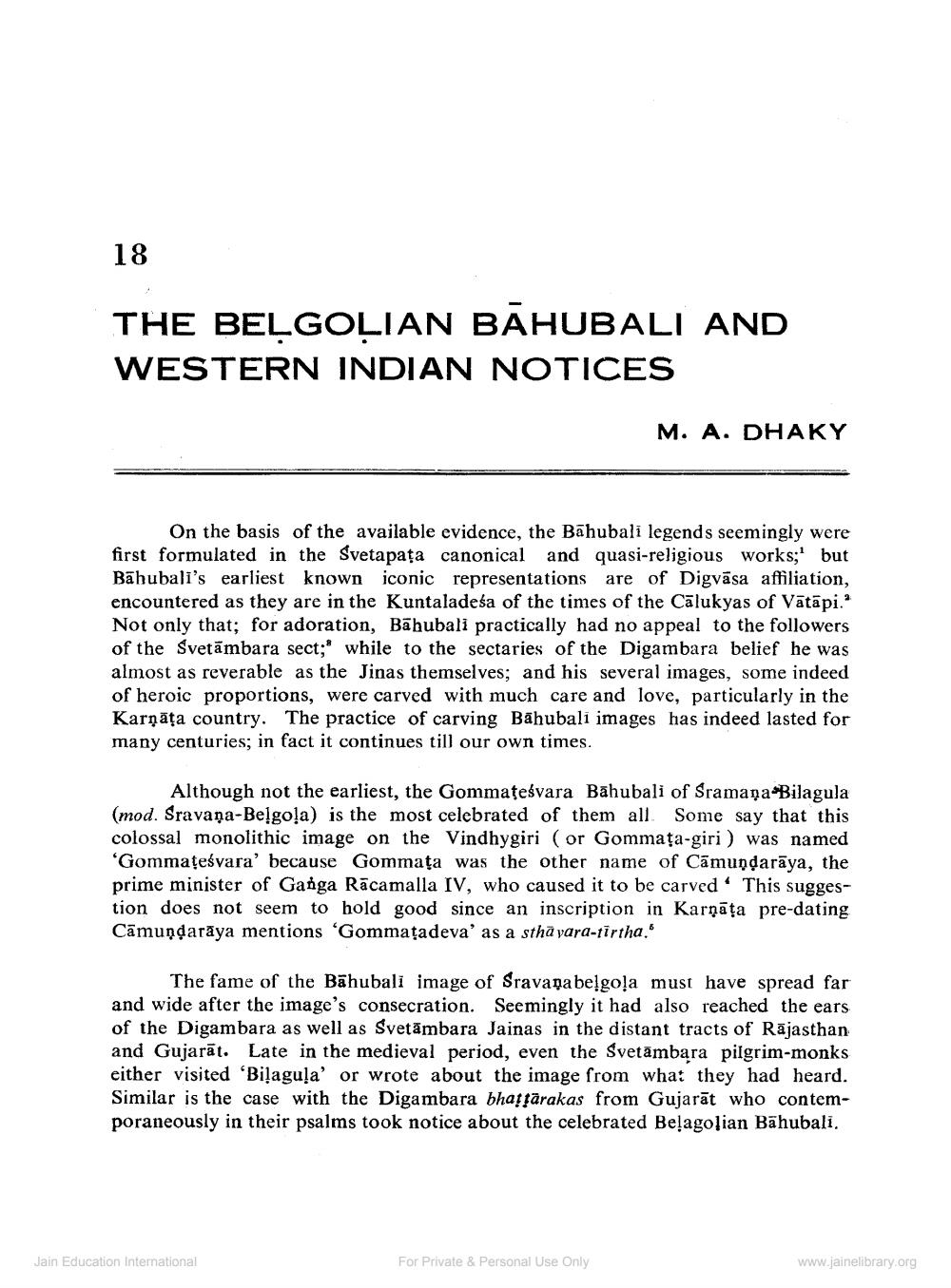________________
18
THE BEĻGOLIAN BAHUBALI AND WESTERN INDIAN NOTICES
M. A. DHAKY
On the basis of the available evidence, the Bahubali legends seemingly were first formulated in the Svetapața canonical and quasi-religious works;' but Bāhubali's earliest known iconic representations are of Digvāsa affiliation, encountered as they are in the Kuntaladeśa of the times of the Cālukyas of Vatapi." Not only that; for adoration, Bāhubali practically had no appeal to the followers of the Svetāmbara sect;* while to the sectaries of the Digambara belief he was almost as reverable as the Jinas themselves; and his several images, some indeed of heroic proportions, were carved with much care and love, particularly in the Karņāța country. The practice of carving Bāhubali images has indeed lasted for many centuries; in fact it continues till our own times.
Although not the earliest, the Gommateśvara Bahubali of Sramaņa Bilagula (mod. Sravaņa-Belgoļa) is the most celebrated of them all. Some say that this colossal monolithic image on the Vindhygiri (or Gommața-giri) was named 'Gommateśvara' because Gommața was the other name of Cāmundarāya, the prime minister of Ganga Rācamalla IV, who caused it to be carvedThis suggestion does not seem to hold good since an inscription in Karņāța pre-dating Cāmundarāya mentions 'Gommaţadeva' as a sthā vara-tirtha."
The fame of the Bahubali image of Sravanabe!goļa must have spread far and wide after the image's consecration. Seemingly it had also reached the ears of the Digambara as well as Svetāmbara Jainas in the distant tracts of Rājasthan and Gujarāt. Late in the medieval period, even the Svetāmbara pilgrim-monks either visited 'Biļaguļa' or wrote about the image from what they had heard. Similar is the case with the Digambara bhațjārakas from Gujarāt who contemporaneously in their psalms took notice about the celebrated Belagolian Bahubali.
Jain Education International
For Private & Personal Use Only
www.jainelibrary.org




